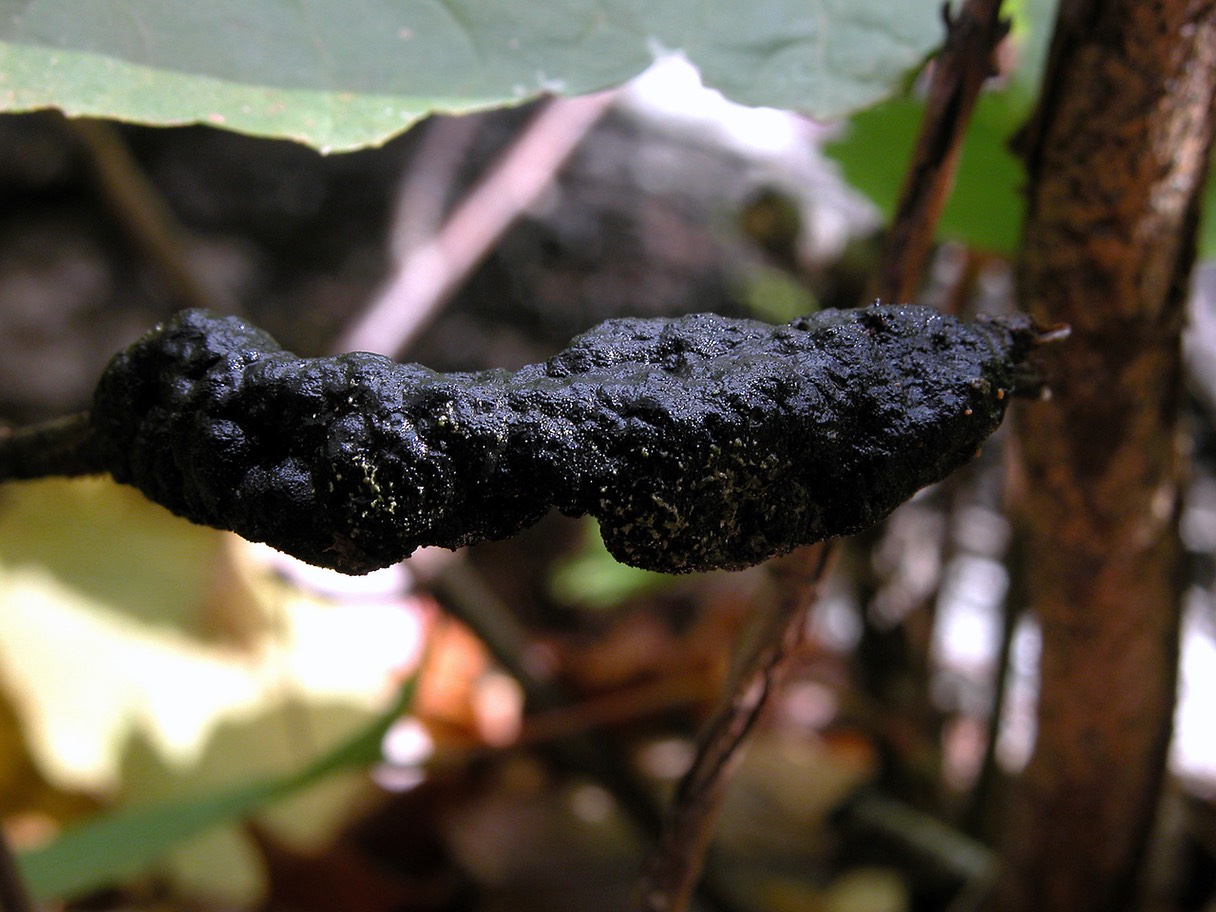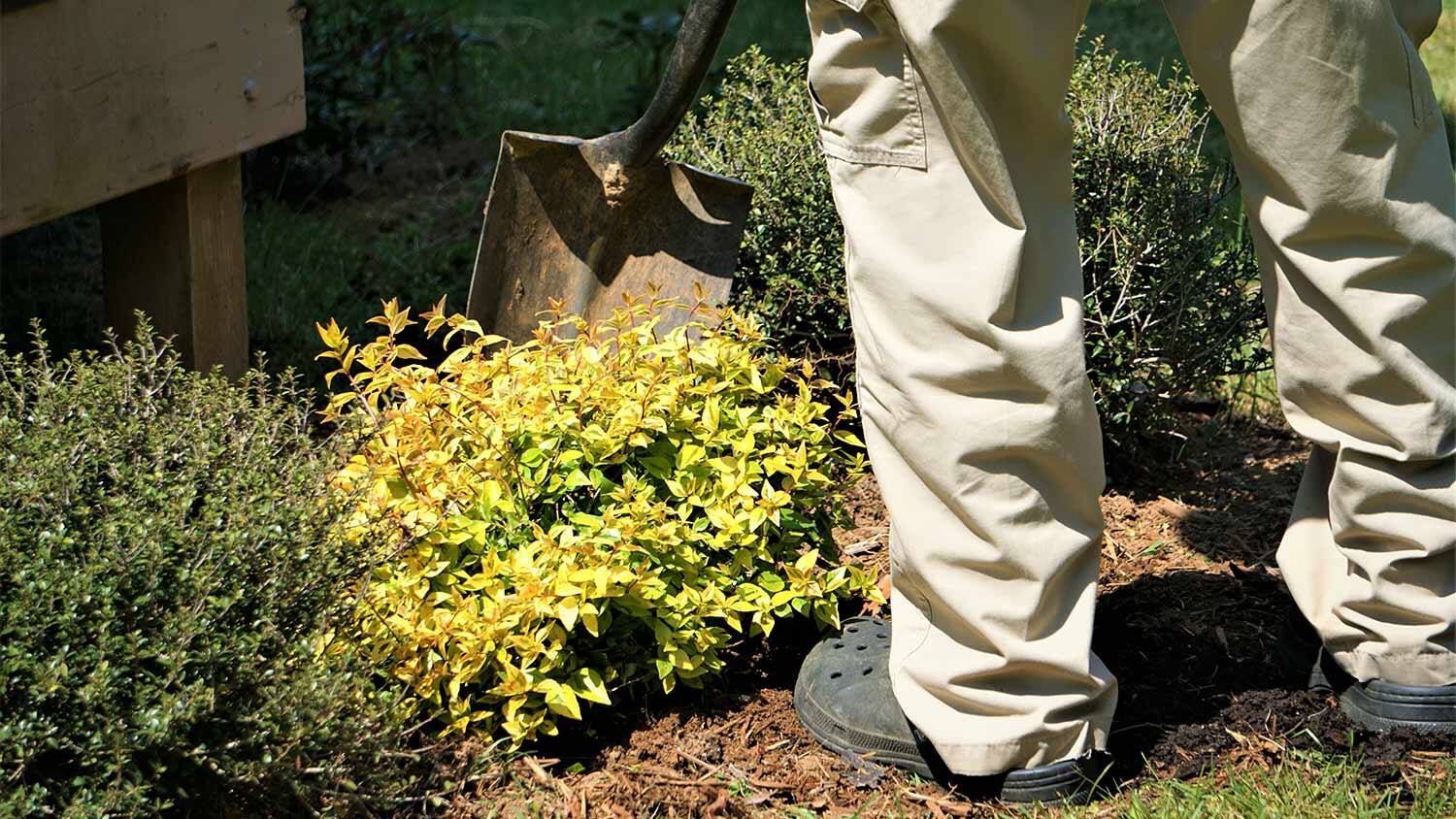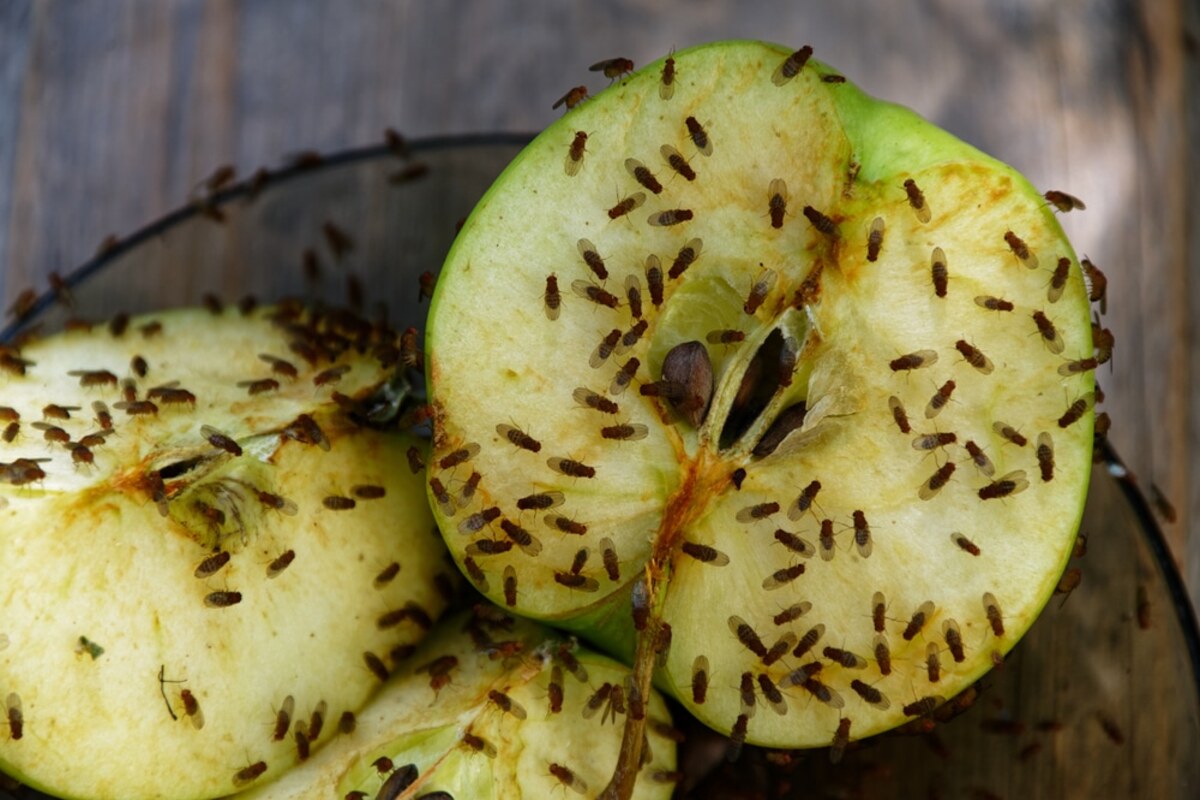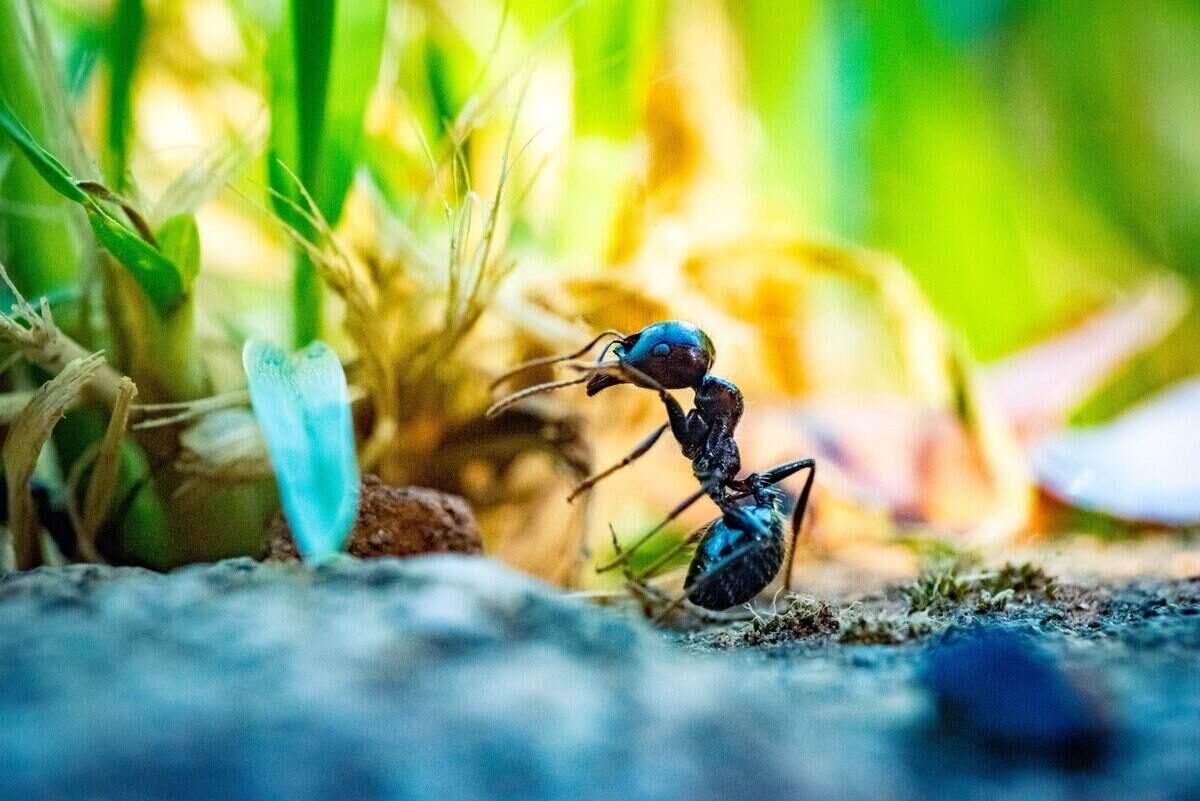Home>Gardening Tips and Tricks>Problem Solving>How To Get Rid Of Caterpillars In Trees


Problem Solving
How To Get Rid Of Caterpillars In Trees
Published: November 1, 2023
Learn effective ways to solve the problem of caterpillars in trees with our expert tips and techniques. Safely eliminate these pests and protect your trees from further damage.
(Many of the links in this article redirect to a specific reviewed product. Your purchase of these products through affiliate links helps to generate commission for Chicagolandgardening.com, at no extra cost. Learn more)
Table of Contents
Introduction
Caterpillars are fascinating creatures that play a crucial role in the ecosystem. However, when they start wreaking havoc on your beloved trees, it’s natural to want to get rid of them. Caterpillars can defoliate trees, weaken their structure, and hinder their overall health and growth. But before diving into the various ways to tackle this problem, it’s essential to understand the caterpillar life cycle and the specific species that might be causing damage to your trees.
Identifying the type of caterpillar infestation is the first step towards effective control. Different species have distinct feeding habits, appearances, and preferences for tree species. For instance, the voracious Eastern tent caterpillar is known to feed on fruit trees and ornamental plants, while the gypsy moth caterpillar prefers deciduous trees.
Once you’ve identified the culprits, it’s crucial to assess the extent of the damage caused. Some caterpillar species can defoliate entire branches or even entire trees, leaving them vulnerable to disease and other pests. In severe infestations, the tree’s overall health and long-term survival may be at stake.
This article will guide you through natural and chemical methods to eradicate caterpillars and prevent future infestations. While chemical options can be effective, it’s important to prioritize environmentally friendly approaches to safeguard beneficial insects and the overall ecosystem. Additionally, implementing proactive measures to prevent caterpillar infestations will help maintain the health and vitality of your trees.
Identifying Caterpillars in Trees
When it comes to dealing with caterpillars in trees, identification is key. Knowing the specific species infesting your trees will allow you to employ the most effective control methods. Here are a few steps to help you identify caterpillars:
- Observe the appearance: Caterpillars come in a variety of shapes, sizes, colors, and patterns. Pay attention to their body structure, the presence of hairs or spines, and any distinct markings. This information will help narrow down the possibilities.
- Consider feeding habits: Different caterpillar species have specific preferences for leaves, fruits, or flowers. Examine the foliage of the affected tree and look for characteristic feeding patterns, such as skeletonized leaves or irregular chew marks.
- Check for nests or silk webs: Some caterpillar species build nests or silk webs on the branches or trunk of the tree. Examples include the Eastern tent caterpillar, which constructs distinctive silk tents in tree crotches, and the webworm caterpillar, which creates visible webbing on the outer branches.
- Consult field guides or experts: If you’re unsure about the caterpillar’s identity, consult field guides or seek guidance from arborists, entomologists, or local extension offices. They can provide accurate information and recommend appropriate solutions.
Remember, accurate identification is crucial because different caterpillar species may require different control measures. Once you’ve identified the caterpillars infesting your trees, you can move on to mitigating the damage and preventing further infestations.
Understanding the Damage
Caterpillars can cause significant damage to trees, impacting their overall health and aesthetic appeal. It’s essential to understand the various ways in which caterpillars can harm trees to effectively address the issue.
Defoliation: One of the most visible signs of caterpillar damage is defoliation. Caterpillars feed voraciously on leaves, often consuming large portions or even entire leaves. This can weaken the tree’s ability to photosynthesize, reducing its energy production and overall vitality.
Weakening of structure: As caterpillars continue to feed, they can strip a tree of its foliage, leaving it exposed and vulnerable. This can weaken the structure of the tree, making it more susceptible to breakage during storms or heavy winds.
Stress and susceptibility to diseases: Defoliation caused by caterpillars can stress the tree, making it more susceptible to diseases and other pests. Trees with diminished foliage are more prone to infections, which can further compromise their overall health.
Impact on fruit production: If you have fruit-bearing trees, caterpillars can directly impact the quality and quantity of your harvest. Feeding on fruits can lead to deformities, reduced yields, or even complete loss of fruiting for the season.
Indirect effects on wildlife: Caterpillar infestations can disrupt the food chain and have indirect effects on wildlife. Some bird species rely on caterpillars as a primary food source for themselves or their chicks. A significant decline in caterpillar populations can, therefore, have a detrimental impact on the bird populations that depend on them.
Understanding the extent of the damage caused by caterpillars can help you prioritize the appropriate control strategies. By addressing the issue promptly and effectively, you can protect the health and longevity of your trees.
Natural Ways to Get Rid of Caterpillars
When it comes to managing caterpillar infestations in trees, there are several natural methods you can employ. These methods are effective in controlling caterpillars while minimizing harm to beneficial insects and the environment. Here are some natural ways to get rid of caterpillars:
- Handpicking: If the infestation is not extensive, manually removing caterpillars by hand can be an effective control method. Use gloves and carefully pick off the caterpillars, dropping them into a bucket of soapy water. Dispose of them away from the affected trees to prevent reinfestation.
- Biological control: Introduce natural predators of caterpillars to your garden. Birds, such as chickadees, warblers, and sparrows, feed on caterpillars and can help control their population. Attracting these birds to your garden with bird feeders, birdhouses, and native plants can be a natural way to manage caterpillars.
- Beneficial insects: Encourage the presence of beneficial insects that prey on caterpillars. Ladybugs, lacewings, and parasitic wasps are natural predators of caterpillars and can help reduce their numbers. Planting flowers and herbs that attract these beneficial insects can create a welcoming habitat for them.
- Neem oil: Neem oil, derived from the neem tree, is a natural insecticide that is effective against caterpillars. Dilute neem oil according to the instructions on the label and spray it on the affected areas of the tree. Neem oil disrupts the caterpillars’ feeding and growth, eventually controlling their population.
- Bacillus thuringiensis (BT): BT is a naturally occurring bacteria that specifically targets caterpillars. It is available in the form of a biological insecticide. When sprayed on the leaves, BT is ingested by the caterpillars, leading to their death. Follow the instructions on the product label for application guidelines.
- Planting resistant varieties: When selecting trees for your garden, opt for species or cultivars that are less susceptible to caterpillar infestations. Research and choose tree varieties known for their resistance to caterpillar damage.
Remember, natural methods may take time to show results, and multiple strategies may need to be employed simultaneously. Regular monitoring of your trees and timely intervention will help manage caterpillar populations naturally and protect the health of your trees.
Chemical Options for Caterpillar Control
If natural methods are not providing sufficient control or if the caterpillar infestation is severe, chemical options can be considered. It’s important to note that chemical control should be used as a last resort and with caution to minimize harm to beneficial insects and the environment. Here are some common chemical options for caterpillar control:
- Insecticidal sprays: There are various insecticides available that specifically target caterpillars. These sprays contain chemicals such as pyrethroids or carbaryl that effectively kill caterpillars upon contact. Follow the manufacturer’s instructions carefully, including the recommended application rates and frequency.
- Systemic insecticides: Systemic insecticides are absorbed by the tree and are transported throughout the plant, making them effective against caterpillars. These insecticides can be applied as soil drenches or injected directly into the trunk. However, systemic insecticides may also harm beneficial insects, so use them sparingly and only when necessary.
- Professional pest control: In severe infestations or when chemical control becomes necessary, it is advisable to seek the help of a professional pest control service. They can assess the situation, determine the most appropriate chemical control methods, and ensure proper application to minimize any potential risks.
- Read and follow instructions: When using any chemical control method, always read and follow the instructions provided by the manufacturer. Pay attention to safety precautions, recommended protective gear, and any restrictions on application near water sources or flowering plants.
While chemical options can provide effective control, it’s important to remember that they can have negative impacts on the environment and beneficial insects. Therefore, it’s crucial to exhaust natural control methods and consider chemical options as a last resort. Practice responsible chemical use by adhering to label instructions, minimizing environmental exposure, and considering the long-term effects on the ecosystem.
Preventing Caterpillar Infestations
Prevention is always better than cure when it comes to caterpillar infestations. By implementing proactive measures, you can reduce the likelihood of an infestation and protect the health of your trees. Here are some effective ways to prevent caterpillar infestations:
- Maintain tree health: A healthy and vigorous tree is less likely to be targeted by caterpillars. Ensure adequate watering, proper fertilization, and regular pruning to promote strong tree growth and resilience.
- Remove egg masses and nests: Caterpillars often lay their eggs on the undersides of leaves or in clusters on tree trunks. Regularly inspect your trees and remove any visible egg masses or nests to prevent the larvae from hatching and causing damage.
- Use physical barriers: If you have valuable fruit trees or ornamental plants, you can use physical barriers like netting or row covers to protect them from caterpillars. Make sure the barriers are properly installed and sealed to prevent caterpillars from accessing the plants.
- Maintain a clean garden: Good garden hygiene can discourage caterpillars from laying eggs or finding shelter. Remove fallen leaves, debris, and dead plant materials regularly to eliminate potential hiding spots for caterpillar larvae.
- Encourage natural predators: Create a welcoming environment for birds, bats, and beneficial insects that feed on caterpillars. Plant native trees, shrubs, and flowers that provide food and habitat for these natural predators.
- Rotate crops: If you have vegetable or fruit gardens, practice crop rotation to prevent the buildup of caterpillar populations. Moving crops around can disrupt the life cycle of caterpillars and reduce the risk of infestations.
- Regular monitoring: Regularly inspect your trees for signs of caterpillar activity, such as chewed leaves or the presence of nests. Early detection allows for prompt intervention and control measures.
By implementing these preventive measures, you can create an environment that is less conducive to caterpillar infestations. Remember to maintain a balance between pest control and preserving the overall ecosystem, allowing beneficial insects and natural predators to thrive alongside your trees.
Conclusion
Caterpillar infestations can pose a significant threat to the health and vitality of trees. Understanding the caterpillar species, the damage they can cause, and adopting appropriate control methods is crucial for effective management. Whether opting for natural or chemical approaches, it’s important to prioritize environmentally friendly methods that minimize harm to beneficial insects and the ecosystem as a whole.
Identification of the caterpillar species infesting your trees is the first step towards control. By understanding their feeding habits and appearance, you can implement targeted strategies. Natural methods, such as handpicking, introducing beneficial insects, and using organic insecticides like neem oil or BT, can be effective in managing caterpillar populations. Chemical options should be considered as a last resort and used responsibly to minimize environmental impacts.
Preventing caterpillar infestations is equally important. Maintaining tree health, removing egg masses and nests, using physical barriers, and encouraging natural predators can significantly reduce the risk of infestations. Regular monitoring and early intervention can help prevent extensive damage and preserve the health of your trees.
Remember, managing caterpillar infestations requires balance and a holistic approach. By promoting biodiversity, maintaining a healthy ecosystem, and adopting proactive measures, you can effectively control caterpillars while ensuring the long-term health and beauty of your trees.










